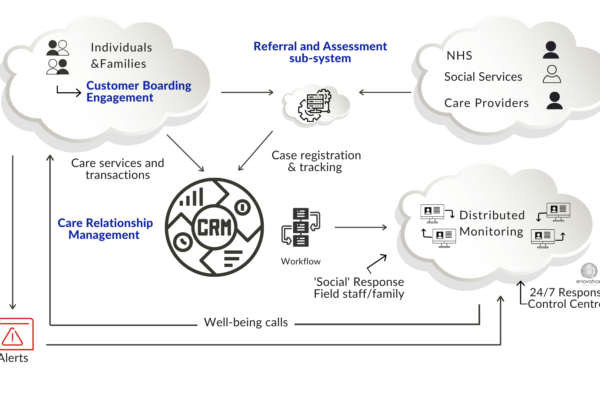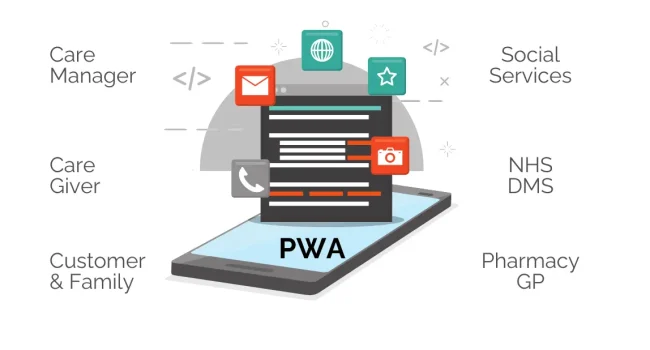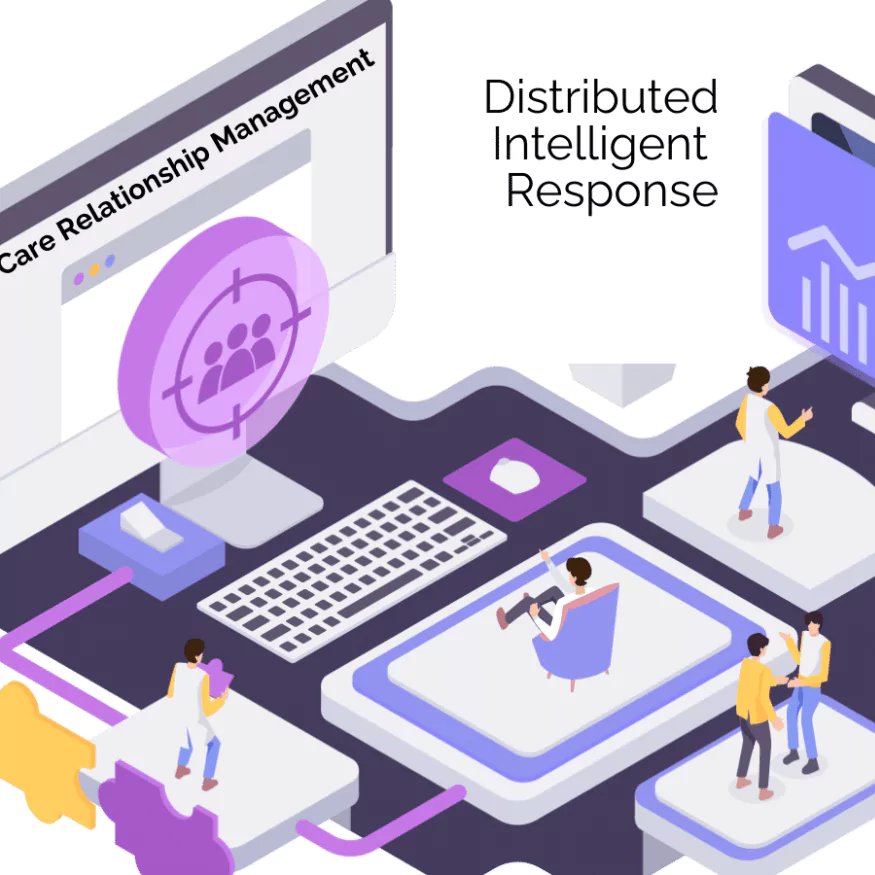HOW IT WORKS
“We unify Providers together with NHS discharge and Primary Care Professionals; in a seamless, cloud-based ecosystem of digital application services.``

THE MODEL
Telehealth as a Service Ecosystem

This diagram is a summary overview of the key elements of the ecosystem, that’s delivered by our integrated platform of combined application services – TeleHealth as a Service.
It also demonstrates the flexibility of deployment and connectivity – including approved 3rd party resourcing:
- Local Authorities
- Domiciliary Carers
- NHS
- Housing Associations
- Private Providers
This diagram is a summary overview of the key elements of the ecosystem, that’s delivered by our integrated platform of combined application services – TeleHealth as a Service.
It also demonstrates the flexibility of deployment and connectivity – including approved 3rd party resourcing:
- Local Authorities
- Domiciliary Carers
- NHS
- Housing Associations
- Private Providers
THE MODEL
Telehealth as a Service Ecosystem

CORE MODULES
TeleHealth as a Service seamlessly integrates
support for:
Efficient Care Management for Wellbeing
- Care Assessment & Planning
- Case Management
- Networked Carer Support Services
- Case notes
- Medication Regimes & Administration
- Always-On Monitoring
- Workflow automation
- Multi-media Cloud Communications
- 24/7 Data Assimilation & Application
User access and applications interface tailored to user profile and needs
- Monitoring Response Centre
- Customers & Families
- Care provider
- Management
- Carers
- Automated Response Centre
- Social workers
- Healthcare Professionals
Enterprise Applications Framework
A suite of integrated, configurable applications - supporting management and operational user tasks plus user engagement:
Custom Windows on digital resource services

DIGITAL TOOLS-P.W.A.
Progressive Web Application
We connect and support remote users deploying the same advanced digital tools as companies such as Uber, Spotify and Alibaba.
Typically these would include:
Carers : Families : Pharmacies : NHS Discharge : Social Worker
.
Custom Windows on digital resource services

DIGITAL TOOLS-P.W.A.
Progressive Web Application
We connect and support remote users deploying the same advanced digital tools as companies such as Uber, Spotify and Alibaba.
Typically these would include:
Carers : Families : Pharmacies : NHS Discharge : Social Worker
.
Support Services
Support services would include:
Care Plan Info
Case Notes Input
Rotas
Medication regimes : administering : prescriptions etc.
Resources – expert help : compliance : communication
The above leveraged by workflow automation, including task-schedules, auto-escalation thresholds and triggers.
Using PWA technology, our platform supports networked devices – smartphones : tablets : Pcs/laptops : Netbooks – with the same tools
TASKS
Workflow Automations
Clients are able to deploy customised, rules-based workflow automations. These handling operational tasks including rotas, medication schedules, activity thresholds, event triggers, mentoring calls and so on…
MONITORED EVENTS
Permanently Monitored Health & Well-being
With and without carer in attendance – true ‘blended care’. Advanced devices, such as watches worn by customers and unobtrusively within key areas of homes, ensure well-being around the clock. They continue collecting vital information, even when care givers are present.
Rules-based workflow automation can be configured to determine who is best to initiate, or respond to, interaction between home and service needed. Proactive interaction might concern remote medication or wellbeing. Reactive involving low activity or emergency. Action could range from family check-in call, carer drop in visit, to ‘blue-light response.
Rules-based workflow automation can be configured to determine who is best to initiate, or respond to, interaction between home and service needed. Proactive interaction might concern remote medication or wellbeing. Reactive involving low activity or emergency. Action could range from family check-in call, carer drop in visit, to ‘blue-light response.

MONITORED EVENTS
Permanently Monitored Health & Well-being
With and without carer in attendance – true ‘blended care’. Advanced devices, such as watches worn by customers and unobtrusively within key areas of homes, ensure well-being around the clock. They continue collecting vital information, even when care givers are present.
Rules-based workflow automation can be configured to determine who is best to initiate, or respond to, interaction between home and service needed. Proactive interaction might concern remote medication or wellbeing. Reactive involving low activity or emergency. Action could range from family check-in call, carer drop in visit, to ‘blue-light response.
Communications
As might be expected from the name, TeleHealth as a Service provides sophisticated communication functionality ‘baked-in’ to users’ application services.
Incoming calls can trigger screen-pops of related records.
In addition to telecomms built right into customer records, clients can also configure more advanced communications services such as chat and video.
